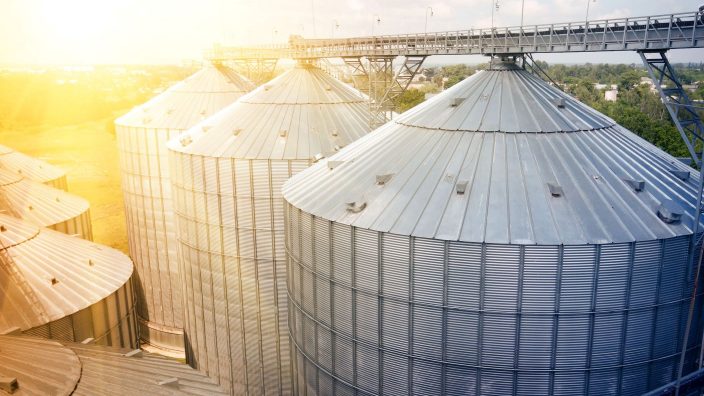What??? Noise hazards in farming
Ohio BWC industrial hygienists, safety consultants, and ergonomists can visit your farm, help spot risks, and suggest improvements that make a real difference.
Read MoreGrain Bin Safety Week Feb. 18-24 is the perfect time for safety reviews, training sessions for your team, and community initiatives to raise awareness about the importance of grain bin safety.
Grain Bin Safety Week starts Feb. 18, and it marks an opportunity for those working in the agriculture industry to renew a commitment to a culture of safety.
There are several potential deadly hazards in grain storage and handling operations which is why the Ohio Bureau of Workers’ Compensation (BWC) invites you to use this dedicated week to conduct thorough safety reviews, organize training sessions for your team, and engage in community initiatives to raise awareness about the importance of grain bin safety. If you’d like, you can also schedule a free safety consultation by calling 1-800-644-6292 or submitting a request online.
Most grain bin fatalities occur when employees enter the bin, become engulfed in the grain, and suffocate. But fatalities may also be caused by exposure to hazardous atmospheres, combustible dust explosions, entanglement in augers and other moving equipment, and falling from elevations. Take some time to review these grain storage and handling tips to ensure your team is up-to-date on the latest safety precautions and procedures.
Remember, workers should never enter grain bins and stand or walk on the grain to help it flow down into the auger or conveyor system. Engulfment can easily occur when a worker stands or walks on grain that has bridged or caked and suddenly begins to flow. These additional safety precautions will help prevent accident or injury:
Adequate ventilation is crucial to prevent the buildup of harmful gasses such as carbon dioxide and carbon monoxide within the grain bins. Implementing ventilation systems and monitoring air quality can safeguard both your grain and the well-being of your staff. In addition, combustible dust, mechanical equipment and fall hazards can be heightened in this environment. Consult this fact sheet for a list of ways to stay protected.
Plus, you can protect your team and gain confidence in your safety procedures when you schedule a free safety consultation by calling 1-800-644-6292 or submitting a request online.
Want more safety resources? Join BWC at the 2024 Ohio Safety Congress & Expo® (OSC24®) at the Greater Columbus Convention Center, March 27-29, 2024. This popular event will offer educational sessions and continuing education on a variety of topics, including business strategies, manufacturing safety, safety management systems, technology and innovations, and much more.
Ohio Bureau of Workers’ Compensation
Established in 1912, the Ohio Bureau of Workers’ Compensation is the exclusive provider of workers’ compensation insurance in Ohio, serving 249,000 public and private employers. With nearly 1,600 employees and assets of approximately $25 billion, BWC is one of the largest state-run insurance systems in the United States. For more, visit bwc.ohio.gov.


Ohio BWC industrial hygienists, safety consultants, and ergonomists can visit your farm, help spot risks, and suggest improvements that make a real difference.
Read More
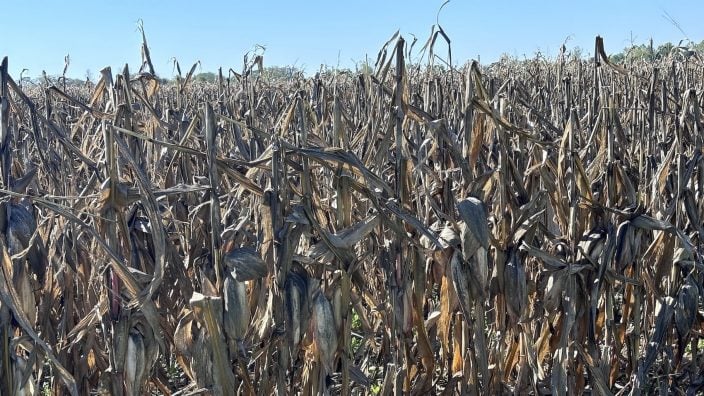
On this Ohio Farm Bureau podcast, we talk about ergonomics in agriculture with Mona Weiss and get an updated forecast from Dr. Aaron Wilson.
Read More

Farming is the backbone of our food supply—providing safe, healthy food for families across the world—but it can take a…
Read More
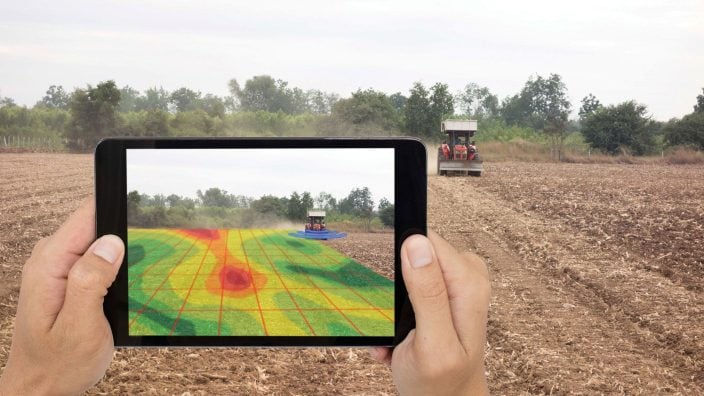
Learn how Ohio State’s eFields is transforming digital agriculture and get some very helpful tips from Ohio Bureau of Workers’ Compensation when it comes to how to combat heat stress.
Read More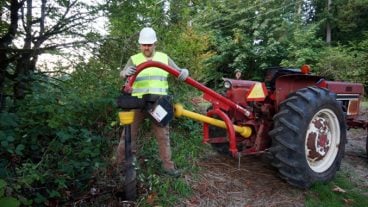
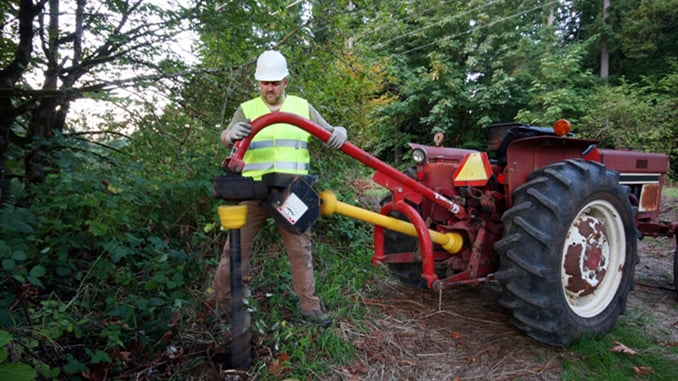
How do we reduce the risks to operators and family members who work with, and near PTO-driven equipment?
Read More

On this Ohio Farm Bureau Podcast, get a full recap of the Country Presidents’ Trip to D.C. and a preview of the 2025 Ohio Safety Congress & Expo.
Read More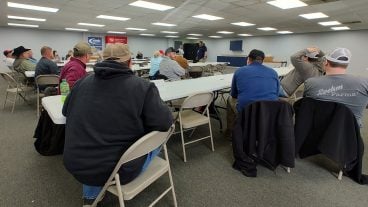
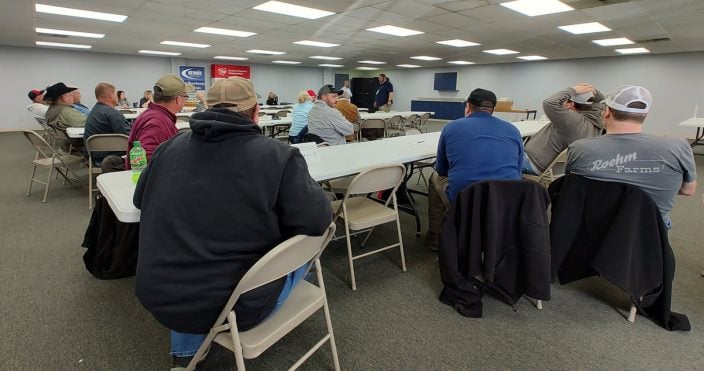
This meeting fulfilled the training requirement for the Farm Bureau group rating program, helping employers better understand workers’ compensation coverage and safety practices.
Read More
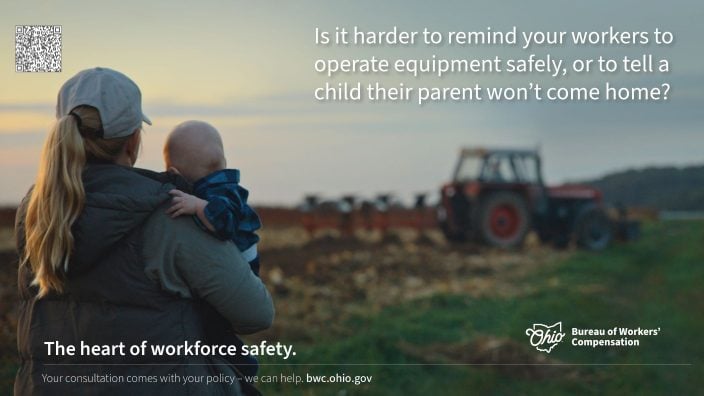
Ohio BWC safety consultants can help you identify potential hazards and develop a plan to eliminate them.
Read More

Get tips on staying safe this winter from experts with the Ohio Bureau of Workers’ Compensation on this Ohio Farm Bureau Podcast.
Read More

Ohio Bureau of Workers’ Compensation offers five tips to help prevent slips, trips and falls—one of the top causes of workplace injuries.
Read More